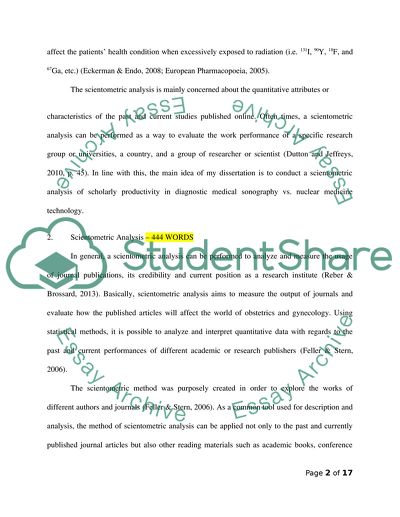Cite this document
(“A Scientometric Analysis Of Nuclear Medicine Technology Dissertation”, n.d.)
A Scientometric Analysis Of Nuclear Medicine Technology Dissertation. Retrieved from https://studentshare.org/health-sciences-medicine/1675511-a-scientometric-analysis-of-scholarly-productivity-in-diagnostic-medical-sonography-vs-nuclear-medicine-technology
A Scientometric Analysis Of Nuclear Medicine Technology Dissertation. Retrieved from https://studentshare.org/health-sciences-medicine/1675511-a-scientometric-analysis-of-scholarly-productivity-in-diagnostic-medical-sonography-vs-nuclear-medicine-technology
(A Scientometric Analysis Of Nuclear Medicine Technology Dissertation)
A Scientometric Analysis Of Nuclear Medicine Technology Dissertation. https://studentshare.org/health-sciences-medicine/1675511-a-scientometric-analysis-of-scholarly-productivity-in-diagnostic-medical-sonography-vs-nuclear-medicine-technology.
A Scientometric Analysis Of Nuclear Medicine Technology Dissertation. https://studentshare.org/health-sciences-medicine/1675511-a-scientometric-analysis-of-scholarly-productivity-in-diagnostic-medical-sonography-vs-nuclear-medicine-technology.
“A Scientometric Analysis Of Nuclear Medicine Technology Dissertation”, n.d. https://studentshare.org/health-sciences-medicine/1675511-a-scientometric-analysis-of-scholarly-productivity-in-diagnostic-medical-sonography-vs-nuclear-medicine-technology.


